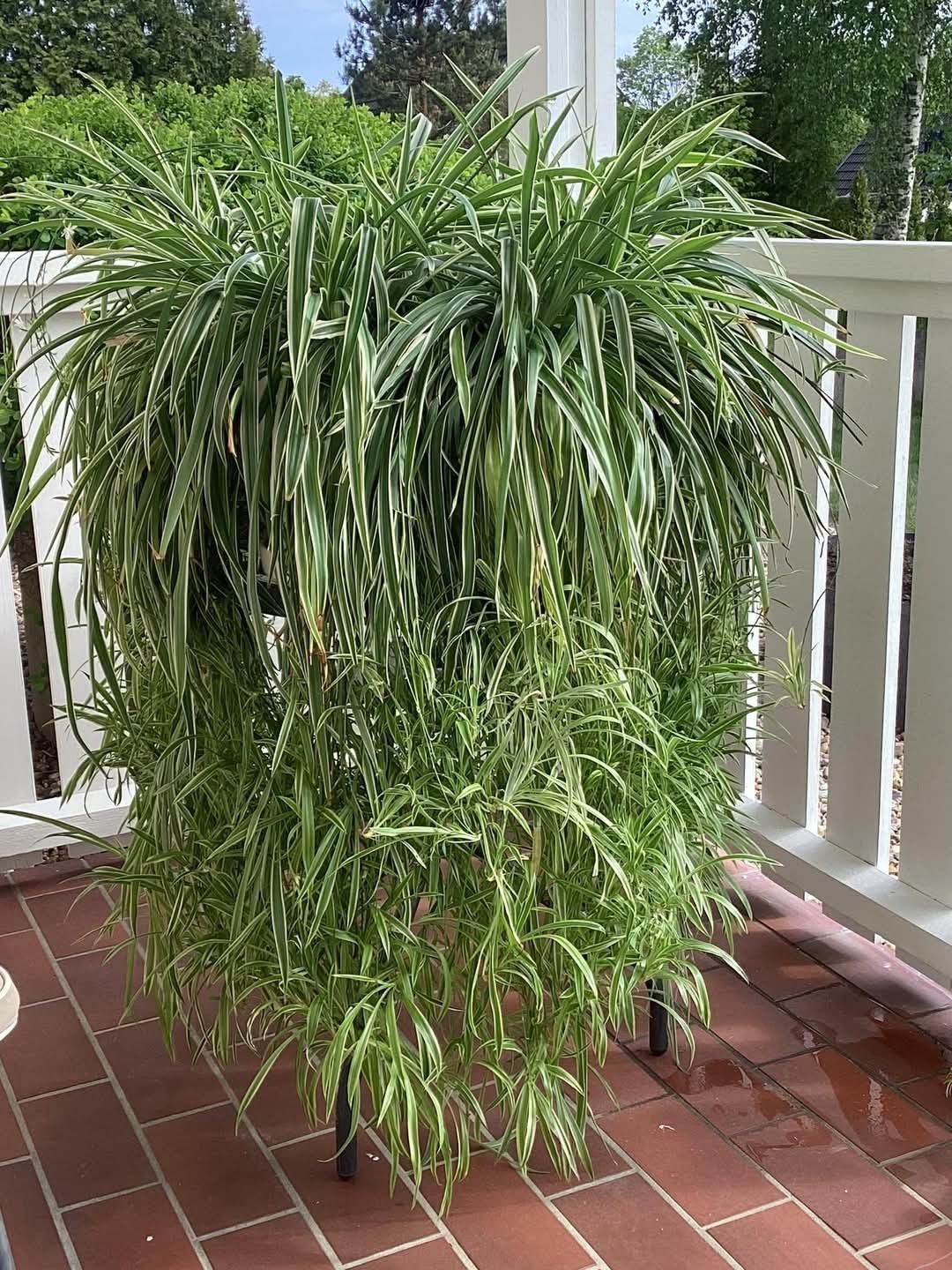5. Feed Them Right
To grow big, spider plants need the right nutrients. I feed mine with a balanced liquid houseplant fertilizer diluted to half strength every two weeks during the growing season.
Avoid over-fertilizing, as it can cause salt buildup in the soil, which leads to browning tips and poor growth.
6. Propagate for Growth
Spider plants naturally produce “babies,” or offsets, which hang down from the parent plant on long stalks. To encourage more growth, I prune these babies occasionally, which redirects the plant’s energy back into the main leaves and roots.
If you want your plant to look fuller, you can also repot several babies back into the same pot as the parent plant. This creates a lush, cascading effect that looks stunning in hanging baskets.
7. Maintain the Right Temperature and Humidity
Spider plants are happiest in temperatures between 60–75°F (15–24°C). They don’t like extreme cold or heat, so keep them away from drafts, air conditioners, and heating vents.
While they tolerate average indoor humidity, I’ve found they grow bigger and healthier when the air is slightly more humid.
8. Prune for Health and Shape
Regular pruning keeps your spider plant looking its best. I remove any yellowing or browning leaves at the base, as well as any damaged tips.
Pruning not only improves the plant’s appearance but also allows it to focus its energy on new, healthy growth.
9. Repot When Needed
Spider plants grow fast, and their roots can quickly become pot-bound. When you notice roots poking out of the drainage holes or the plant’s growth slows, it’s time to repot.
I usually repot my spider plants every 1–2 years into a slightly larger pot. This gives their roots more room to expand, which promotes bigger and bushier growth.
10. Rotate for Even Growth
Spider plants tend to grow toward the light source, so I make it a habit to rotate the pot every week or two. This ensures the plant grows evenly and maintains its full, balanced shape.
ADVERTISEMENT

